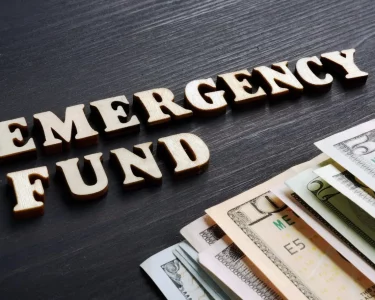United Airlines, like many other airlines, has been facing a major challenge due to the soaring fuel prices. In recent times, they have had to make some tough decisions and take steps towards mitigating the impact of these costs on their business. However, despite this setback, there seems to be hope for United Airlines as they forecast a stronger performance in the second quarter. In this blog post, we’ll delve into how United Airlines is tackling the rising cost of fuel and what their plans are for improving their performance going forward. So buckle up and join us on this high-flying ride!
United Airlines hits a snag
United Airlines, like many other airlines, has faced a significant challenge in recent times. The rising cost of fuel has hit them hard and forced them to make some tough decisions. It is something that they could not have foreseen or controlled, but it’s had an impact on their business operations.
As the world continues to recover from the pandemic, people are starting to travel again. However, this sudden surge in demand for air travel comes with a catch – higher fuel prices due to supply chain disruptions and other factors. This means United Airlines must find ways to offset these costs without passing them onto their customers.
United Airlines has been doing everything possible to cut costs while still providing quality services for its passengers. They’ve reduced capacity on some routes and made changes to flight schedules as needed.
Despite these steps taken by United Airlines though, the rise in fuel prices continues unabatedly posing challenges for airlines around the world including United Airlines who have seen profits take a dip recently as well as decreasing passenger numbers compared with pre-pandemic levels.
Rising fuel prices pose one of the most significant challenges facing airlines today; it is essential that companies like United continue searching for innovative ways of improving efficiency while reducing operational costs so that they can maintain profitability even amidst challenging circumstances such as now being experienced globally due mainly because of COVID-19 outbreaks leading into supply chain disruptions causing unstable oil pricing worldwide which affects airline industry highly dependent on jet fuels derived from crude oils among others reasons.
The rising cost of fuel
One of the biggest challenges faced by the airline industry today is the soaring cost of fuel. United Airlines, like many other airlines around the world, has been hit hard by rising fuel prices. In fact, fuel now accounts for more than one-third of United’s total operating expenses.
The price of oil has risen significantly in recent months due to various factors such as geopolitical tensions and production cuts. This situation has put pressure on airlines to raise fares and cut costs in order to remain profitable.
United Airlines responded quickly to this challenge by implementing a number of initiatives to reduce its fuel consumption and improve efficiency. These include investing in new aircraft with more efficient engines, optimizing flight paths and schedules, and reducing weight onboard each flight through measures such as using lighter materials for seats and reducing unnecessary cargo.
Despite these efforts, United still expects its fuel bill to increase by $700 million this year compared with last year’s figures. However, it remains committed to finding innovative ways to manage its costs while maintaining a high level of service for its customers.
As an airline that values sustainability and environmental responsibility, United also recognizes the importance of developing alternative fuels that are both cost-effective and eco-friendly. The company is actively exploring options such as biofuels made from sustainable sources like algae or waste products.
While rising fuel prices present significant challenges for airlines like United Airlines in terms of profitability and operational efficiency, they also provide opportunities for innovation and growth through initiatives aimed at managing costs sustainably while improving customer experience.
United Airlines’ response to the increased fuel prices
United Airlines has been feeling the heat from rising fuel prices, just like many other airline companies. However, instead of simply accepting their fate and increasing ticket prices as a quick fix solution, United has taken a more proactive approach to the issue.
One way they have responded is by investing in more fuel-efficient aircraft. In 2020 alone, United added over 30 new planes to their fleet that are designed to consume less fuel than older models. This move not only helps reduce costs but also benefits the environment.
Another way United is dealing with increased fuel costs is by optimizing flight routes and schedules for maximum efficiency. By analyzing data on weather patterns and passenger demand, they can adjust flight plans accordingly to minimize fuel usage while still meeting customer needs.
United has also implemented minor changes that may seem insignificant but add up over time. For example, reducing weight on board by using lighter materials or installing winglets on planes which help reduce drag during flight – both measures save on fuel consumption.
It’s clear that United Airlines isn’t taking the hit from rising fuel prices lying down. They’ve shown resilience and innovation in response to this challenge – all while keeping their customers’ experience top of mind.
Forecasting stronger performance in the second quarter
United Airlines is a well-known name in the aviation industry, and their recent financial reports have been making headlines. After facing some setbacks due to rising fuel prices, they are now forecasting stronger performance in the second quarter.
The airline has taken several measures to tackle the increased fuel costs, such as investing in more fuel-efficient aircraft and adjusting flight schedules. These efforts seem to be paying off as United expects better results for Q2.
One of the reasons behind this optimistic forecast is an increase in travel demand. As vaccination rates rise and restrictions ease up, more people are eager to fly again. This trend is expected to continue throughout the summer months, which bodes well for United’s revenue.
Moreover, United Airlines has also been expanding its network by adding new routes and increasing frequencies on existing ones. By providing more options for travelers, they can capture a larger market share and boost their profits.
It seems like United Airlines is poised for a comeback after facing challenges posed by soaring fuel prices earlier this year. With strategic planning and investments in efficiency measures paying dividends along with pent-up demand from travellers eager to get away after COVID-19 lockdowns will allow them to grow their business further whilst remaining competitive within the sector.
Conclusion
United Airlines faced challenges due to the rising cost of fuel in the first quarter. However, they responded by implementing various measures such as increasing ticket prices and optimizing their routes to mitigate the impact of these costs.
Their efforts are expected to pay off in the second quarter with a forecasted stronger performance. This is good news for both United Airlines and its customers who can continue to enjoy quality services from one of America’s leading airlines.
As fuel prices remain unpredictable, it is crucial for airlines like United Airlines to continuously adapt and optimize their operations while providing excellent customer service. With this strategy, they will be able not only to weather any turbulence but also maintain their position as a major player in the aviation industry.




